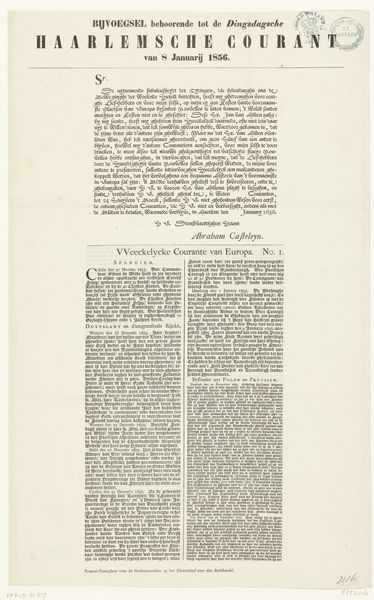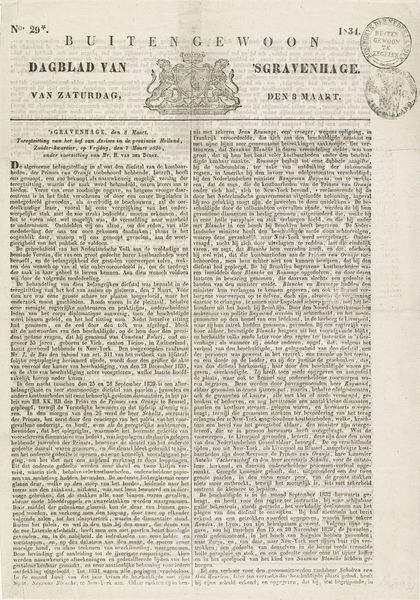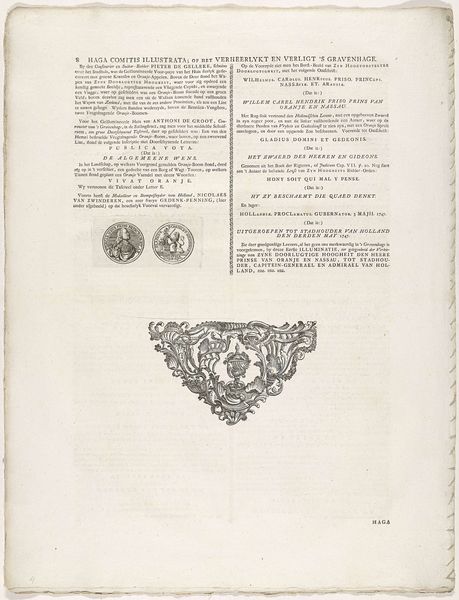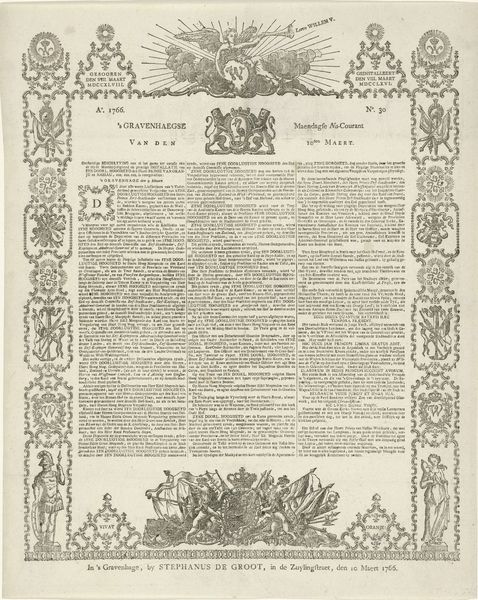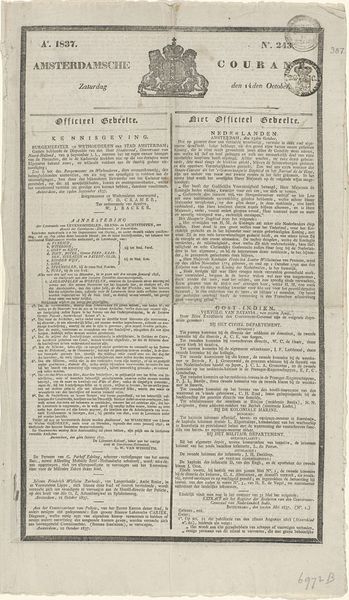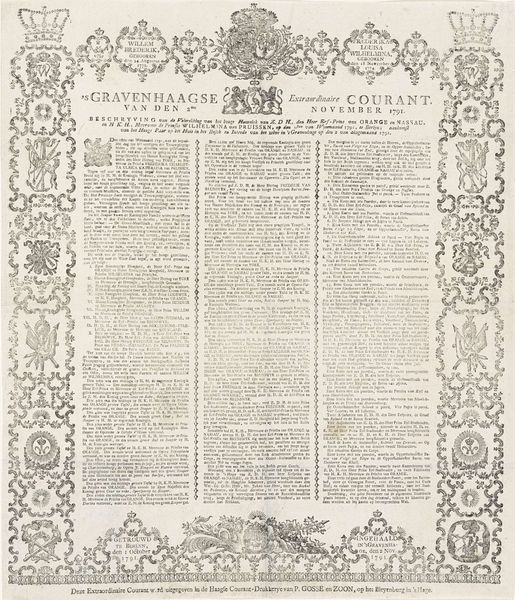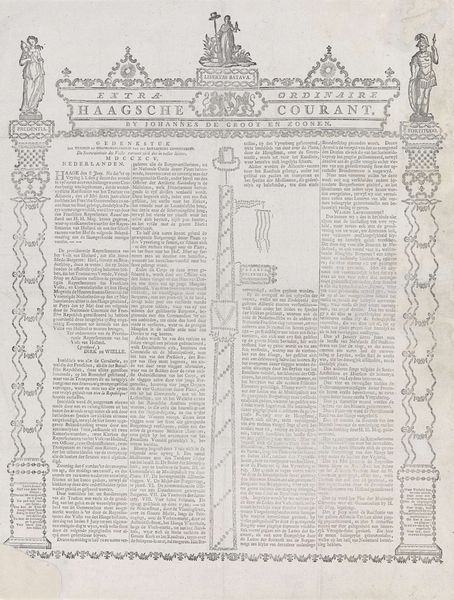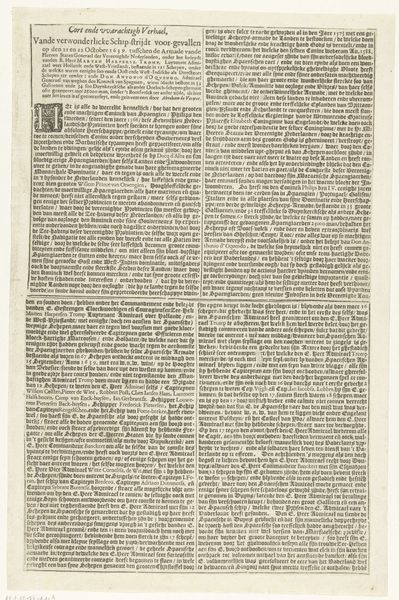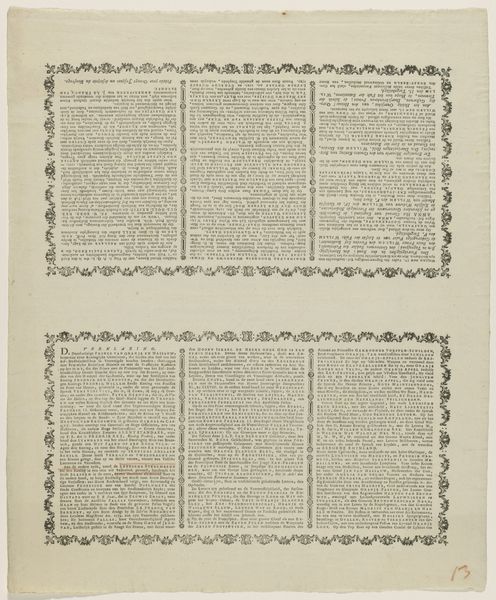
print, engraving
#
dutch-golden-age
# print
#
old engraving style
#
hand drawn type
#
landscape
#
history-painting
#
engraving
Dimensions: height 197 mm, width 151 mm, height 535 mm, width 420 mm
Copyright: Rijks Museum: Open Domain
Curator: Looking at this piece, I'm struck by its intense linearity. It's a dense, tightly composed engraving, dominated by text, punctuated by an evocative, framed image. Editor: Immediately, I see a story of struggle and resilience in this 18th-century print, "Nederland getroffen door watersnood, 1775" by Jan Caspar Philips. Water dominates, threatening to engulf a small sailing vessel while a town disappears in the background. I see more than just the landscape here. Curator: Indeed. Observe how the scene itself is bordered by classical figures. They frame and elevate the central depiction of the flood into the realm of allegory. And above the framed flood we see celestial spheres populated with cherubic figures, suggesting a divine narrative is at play. What interpretations might stem from these deliberate compositional choices? Editor: To me, these figures suggest that while there may be human hardship caused by natural disaster, these are not events outside of a greater, divine scheme. They function as a constant symbolic reminder of mortality and a hope for salvation. The sheer volume of text—much of it in decorative, hand-drawn script— further emphasizes the role of literacy, as a historical source and potential solace, in such times. Curator: You raise an important point about literacy. In analyzing the artwork, it’s impossible to separate the visual elements from the linguistic ones. Look at how the image is constructed—its careful etching creating precise lines. Similarly, consider the meticulous arrangement of text. Could it be argued the print asks to be appreciated as a constructed form of meaning? Editor: Possibly. But I interpret the deluge of text as reflecting a culture grappling to understand catastrophe. I can almost see communities huddled together, deciphering the implications of the flood through shared readings and interpretations. The shared iconography is critical to maintaining cultural continuity in these communities. Curator: So you are highlighting the communal consumption of meaning as a central function? Very interesting, the way symbols transmit meaning and preserve memory. Editor: Exactly. What do you take away from the experience? Curator: Beyond the interplay of form and symbolic content, I'm intrigued by how the artwork balances order and chaos, much like society itself attempts to control nature even as nature constantly evades. Editor: For me, it’s the artwork’s resilience as an object—a testament to survival through art.
Comments
No comments
Be the first to comment and join the conversation on the ultimate creative platform.
